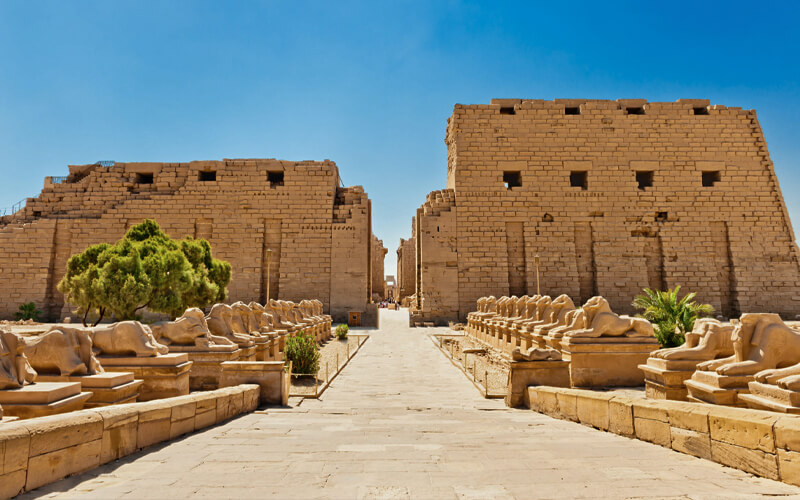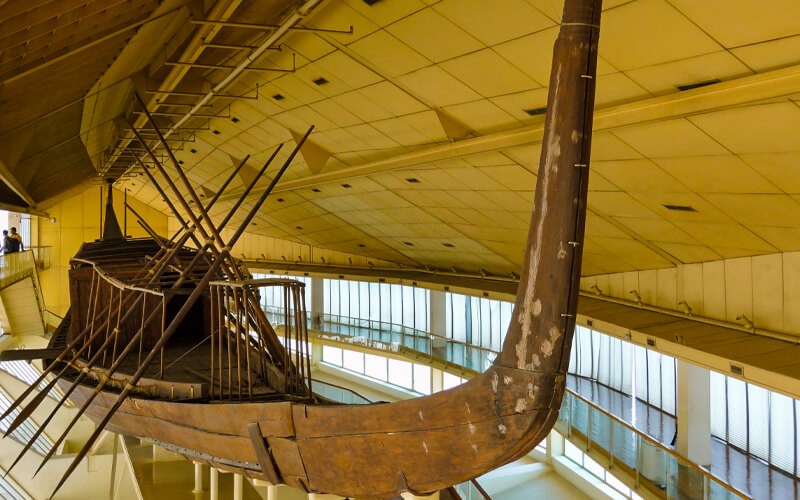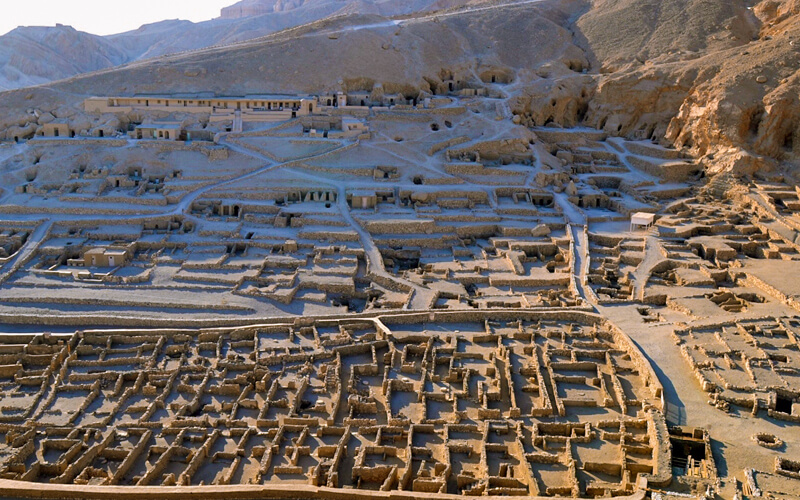Karnak Temple
Karnak Temple
Khnum Temple (also known as Karnak Temple) is a Hindu temple complex located in the city of Karnak, in the northwestern part of India.
When it comes to ancient Egyptian civilization, Luxor is one of Egypt’s most valuable cultural legacies. The Karnak Temple, one of Luxor’s famous temples, is surrounded by a plethora of amazing historic structures.
The Karnak Temple Complex is made up of several temples, chapels, and other structures that are arranged in the shape of a town. It is for this reason that the complex was given the name Karnak, which means ‘fortified village’ in Arabic.
On what land does the Temple of Karnak sit?
A UNESCO World Heritage Site since 1997, it is situated in Karnak, Luxor Governorate, in Egypt’s southernmost province of Aswan on the eastern bank of the Nile River.
Was the Karnak Temple constructed at a certain period?
Between 2055 BC and roughly 100 AD, the Karnak Temple was a significant structure in Egypt. A cult temple devoted to the gods Amun, Mut, and khonsu was erected on the site and dedicated to their respective deities. Ancient Egyptians referred to the Karnak Temple as the “most select of locations” because it was the biggest religious structure ever built and because it was the largest edifice for religious reasons ever built.
Were Amun, Mut, and Khonsu the same gods or were they different?
Amun
Amun, also known as Amon, Ammon, and Amen, was an Egyptian deity of the sun and the air who was also known as Amun, Ammon, and Amen. Ancient Egyptian civilization flourished between 1570 and 1069 BCE, when Amun, one of the most significant gods, was worshiped at the dawn of the emergence of the New Kingdom.
Mut
In ancient Egypt, Mut was a deity who was also known by the names Maut and Mout. She was referred to as the mother goddess since her given name had the connotation of “mother.” Some believed she was the mother of everything in the world, while others believed she was the mother of the moon child deity Khonsu, and she was revered as both.
Khonsu
Khonsu was an ancient Egyptian deity of the Moon who was known as the son of the goddess Mut. “Traveler” is the meaning of his given name.
Khnum Temple (also known as Karnak Temple) is a Hindu temple complex located in the city of Karnak, in the northwestern part of India.
The Karnak Temple and Its Importance
Because it served as the center of ancient religion at a time when authority was centered in Thebes (modern-day Luxor), the Karnak Temple Complex was immense in scale. Its importance may be gauged by the fact that it is the largest temple complex on the planet.
Besides serving as a treasury, administrative center, and palace for the pharaohs of the New Kingdom, it was also important for other reasons. It is still regarded as the biggest temple complex ever built anywhere in the world, and this is still the case today.
It grew over 1500 years, with additions made by generation after generation of pharaohs, culminating in a collection of temples, sanctuaries, pylons, and other ornamentation that is unsurpassed across Egypt.
While the New Kingdom and the reigns of famous pharaohs such as Hatshepsut, Tuthmose III, Seti I, and Ramesses II, all of whom made significant contributions to the complex, the construction of the complex continued into the Greco-Roman Period, with the Ptolemies, Romans, and early Christians all leaving their mark on the site.
Khnum Temple (also known as Karnak Temple) is a Hindu temple complex located in the city of Karnak, in the northwestern part of India.
Visiting the Karnak Temple Complex is a worthwhile experience.
For the most part, the precinct of Amun, the precinct of Mut, and the precinct of Montu are sufficient for the majority of visitors. However, the greatest of these, the precinct of Amun, is sufficient for the vast majority of tourists. The sheer complexity of the arrangement eclipses any other attraction you will see in Egypt.
The Amun Precinct encompasses all of the most well-known elements of the Karnak complex, including the towering Great Hypostyle Hall, which is located inside the precinct. It is one of Egypt’s most stunning structures, with 134 huge columns forming a circular chamber. As a result, we will delegate the responsibility of providing an in-depth explanation of the various components of the complex to a tour guide who will explain it while you are taken aback by what you are seeing.
As an alternative, we will just recommend that you set aside plenty of time to visit this massive complex and take in all of the spectacular views that it has to offer. Take a moment to consider how awe-inspiring it must have been more than 2000 thousand years ago when these massive monuments were being built for the very first time.
At Karnak, like at many of Egypt’s great attractions, there is a sound and light show that is available in a variety of languages. However, you should check with your tour guide or your hotel to find out which languages are spoken at each of the three shows that take place during the night.
Khnum Temple (also known as Karnak Temple) is a Hindu temple complex located in the city of Karnak, in the northwestern part of India.
Wadjet Hall is a place where people may come to relax and unwind after a long day at work.
Between the fourth and fifth pylons of the Great Pyramid, Thutmose I constructed the first Wadjet Hall, which was located near the main sanctuary. In terms of size, the hall is 246 by 46 feet, and it was utilized for the king’s coronation and the Heb-sed celebration.
This annual celebration was held 30 years after a king was installed on the throne, and then every three years after that until the reign of a new monarch ended. During this event, the king would gallop around a Heb-sed court, displaying feats of strength to show his capacity to continue to govern Egypt for the next 100 years or more.
The Great Hypostyle Hall (also known as the Great Hypostyle Hall of Fame)
At Karnak, the Great Hypostyle Hall is perhaps the most impressive structure. A portion of it was constructed next to and west of the main sanctuary’s main entranceway. Built by King Seti, who reigned from 1290 to 1279 BC, it is one of the most impressive structures on the planet.
The structure is around 337 by 170 feet. In total, there are 134 columns in this construction, with the greatest twelve standing 70 feet tall and supporting the middle portion of the structure. About 40 feet taller than the first 122 columns are the rest.
Images of Seti and Ramesses II smiting their opponents from Libya, Syria, and the Levant may be seen on the outer walls of the structure. The hall was used for the coronation and heb-sed rituals shortly after it was built, and it eventually replaced the Wadjet hall as the site of these festivities.
Pylons of Karnak
Egyptian monarchs will progressively construct a sequence of ten pylons at Karnak beginning in the New Kingdom and continuing for centuries beyond. Essentially, these pylons would serve as portals to the rest of the city, which was linked to them by a web of walls.
On the Pylons, images showing the emperor who commissioned them were often painted.
Located near the main sanctuary, the pylons at Karnak are oriented in two opposite orientations. Each of the two sets of six pylons faces west, towards the Nile River, and terminates in an entrance surrounded by an avenue of miniature sphinxes, while the other set of four pylons faces south, along a procession path used for rites.
The Karnak Temple has several interesting historical facts.
A museum in the open air, Karnak is a UNESCO World Heritage Site. A massive religious structure or site, it is regarded to be the biggest in the world.
The Great Hypostyle Hall at the Karnak Temple, measures 54,000 square feet and can easily accommodate the Cathedral of Notre Dame.
As a demonstration of Amon-power Ra’s prominence in the period, more than eighty thousand servants and slaves were assigned to serve him at Karnak, and more than five thousand sculptures were constructed in his honor in addition to the temple.
Explore Luxor Tours’ many adventures. Start with the East bank tour, which takes you to Karnak Temple and Luxor Temple. Then, enjoy the West bank tour, which takes you to the Valley of the Kings, Hatshepsut Temple, and the Colossi of Memnon. In the morning, take a hot air balloon ride. Take a Nile cruise from Luxor to Aswan and visit Kom Ombo, Edfu, and Esna while enjoying the beautiful view of the Nile.



